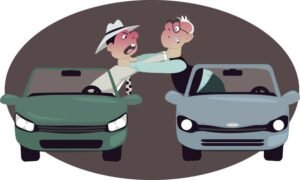Driving can be a stressful experience, especially in cities where traffic congestion and busy intersections can lead to frustration and impatience behind the wheel. Unfortunately, this can often lead to aggressive driving behaviors that put not only the driver, but also other road users in danger. In this article, we will explore the dangers and consequences of aggressive driving in cities and provide tips for safer driving practices.
What is Aggressive Driving?
Aggressive driving refers to a range of dangerous and reckless behaviors behind the wheel. It can include anything from excessive speeding and tailgating to cutting off other drivers, weaving through traffic, and using abusive language or gestures. These behaviors can quickly escalate into road rage, where drivers may engage in physical violence or use their vehicles as weapons.
The Dangers of Aggressive Driving
Aggressive driving is not only dangerous, but it can also have serious consequences. According to the National Highway Traffic Safety Administration (NHTSA), aggressive driving is a factor in up to one-third of all crashes on the road. In addition to the risk of collision, aggressive driving can also lead to other negative consequences, such as:
- Increased stress and anxiety
- Higher fuel consumption and vehicle wear and tear
- Legal penalties, fines, and even jail time in extreme cases
- Increased insurance premiums and potential loss of coverage

Tips for Safer Driving in Cities
Here are some tips to help you stay safe on the road and avoid engaging in aggressive driving behaviors:
- Plan ahead: Before you hit the road, plan your route and allow extra time for potential traffic congestion. This can help you avoid the stress and impatience that can lead to aggressive driving.
- Practice patience: It’s important to remember that everyone on the road is just trying to get to their destination. Don’t let the actions of other drivers provoke you into aggressive behavior. Instead, take a deep breath and remain patient.
- Leave plenty of space: Tailgating is a common form of aggressive driving that can lead to rear-end collisions. To avoid this, leave plenty of space between you and the car in front of you.
- Use turn signals: Using turn signals can help other drivers anticipate your movements and avoid collisions. Be sure to use them early and consistently to communicate your intentions.
- Avoid distractions: Texting, eating, and other distractions can take your attention away from the road and increase your risk of an accident. Stay focused on driving and keep your hands on the wheel.
- Keep your cool: If you encounter an aggressive driver on the road, it’s important to stay calm and avoid engaging with them. Don’t respond to aggressive gestures or language, and avoid eye contact.
- Know when to pull over: If you find yourself becoming too frustrated or angry on the road, it may be time to pull over and take a break. This can help you calm down and avoid engaging in aggressive driving behaviors.
Conclusion
Aggressive driving is a dangerous and reckless behavior that can have serious consequences on the road. By understanding the dangers of aggressive driving and practicing safer driving habits, we can all do our part to make the roads safer for everyone. Remember to plan ahead, stay patient, and always prioritize safety when behind the wheel.






